HALLIE EPHRON: One of the pitfalls of being me is that people assume that I know something about writing screenplays. Let me assure you (as I do them), I do not.
My parents were screenwriters. My sisters, too. But my favorite things to write are setting and internal dialogue (narrator's thoughts)... none of which show up in a screenplay. In a screenplay it's mostly dialogue and (brief) suggestions on the staging and character affect.
Moving the reader through the setting with the characters usually requires research. The writers has go GO somewhere and take notes, record sounds, take pictures, talking to locals. Research, if it's an historical setting. A ton of world building if it's fantasy.
But there's a special pleasure (and ease) writing a story that is set in in A PLACE FROM YOUR OWN PAST. Possibly a place that no longer exists the way it was then.
I did this In "Night Night, Sleep Tight" which takes place Beverly Hills in the early 60's when I was growing up there. The THERE/there no longer exists except in my memory, so that's where I went to find the details I needed.
In one of the opening chapters, Deirdre reluctantly driving back to her childhood home to deal with her wayward father. Along the way she's flooded with memories, just as I was writing this since I'd taken that drive (decades ago) a gajillion times: Sunset Boulevard, from the San Diego Freeway to Beverly Hills.
I remember every curve. Every stoplight...
**
Deirdre crossed into the left lane and accelerated. Power surged and her Mercedes SL automatically downshifted and shot forward, hugging the road as she pushed it around a bend. She braked into the curves and accelerated coming out, weaving between cars on the winding four-lane road.
Forty, forty-five, fifty. The end of her crutch slid across the passenger seat, the cuff banging against the door.
The car drifted into the right lane coming around a tight curve and she had to slam on the brakes behind a red bus that straddled both lanes and poked along at twenty miles an hour, idling just outside walled estates. STARLINE TOURS was painted in slanting white script across the back.
Deirdre tapped the horn and crept along behind the bus, past pink stucco walls that surrounded the estate where Jayne Mansfield had supposedly once lived.
It had been a big deal when the actress died, had to have been at least twenty years ago. And still tourists lined up to gawp at her wall. Breasts the size of watermelons and death in a grisly car accident (early news reports spawned the myth that she’d been decapitated)—those were achievements that merited lasting celebrity in Hollywood.
That, or kill someone.
It was the same old, same old, real talent ripening into stardom and then festering into notoriety. Deirdre sympathized with Jayne Mansfield’s children, though, who must have gone through their lives enduring the ghoulish curiosity of strangers.
Buses like the one belching exhaust in front of her now used to pull up in front of her own parents’ house, passengers glued to the windows. Most writers, unless they married Jayne Mansfield, did not merit stars on celebrity road maps. And in the flats between Sunset and Santa Monica where her father lived, notables were TV (not movie) actors, writers (not producers), and agents, all tucked in like plump raisins among the nouveau riche noncelebrity types who’d moved to Beverly Hills, so they’d say, because of the public schools.
You had to live north of Sunset to score neighbors like Katharine Hepburn or Gregory Peck. Move up even farther, into the canyons to an ultramodern, super-expensive home to find neighbors like Frank Sinatra and Fred Astaire.
Arthur Unger had earned his spot on the celebrity bus tour through an act of bravery that had lasted all of thirty seconds. It had been at a poolside party to celebrate the end of filming of Dark Waters, an action-packed saga with a plot recycled from an early Errol Flynn movie.
Fox Pearson, the up-and-coming actor featured in the film, either jumped, fell, or was pushed into the pool. Sadly for him, no one noticed as the cast on the broken leg he’d suffered a week earlier doing his own stunts in the movie’s finale dragged him to the bottom of the deep end. Might as well have gone in with his foot stuck in a bucket of concrete.
A paparazzo had been on hand to immortalize Arthur shucking his shoes and jacket and diving in. Fox Pearson’s final stunt, along with its fortuitous synchronicity with the movie’s title, earned more headlines for the dead actor than any of his roles. Suddenly he was the second coming (and going) of James Dean, a talent that blazed bright and then . . . cue slow drum roll against a setting sun . . . sank below a watery horizon.
(Yes, I really did used to sit in our front window and wave at the tour busses.)
Forty, forty-five, fifty. The end of her crutch slid across the passenger seat, the cuff banging against the door.
The car drifted into the right lane coming around a tight curve and she had to slam on the brakes behind a red bus that straddled both lanes and poked along at twenty miles an hour, idling just outside walled estates. STARLINE TOURS was painted in slanting white script across the back.
Deirdre tapped the horn and crept along behind the bus, past pink stucco walls that surrounded the estate where Jayne Mansfield had supposedly once lived.
It had been a big deal when the actress died, had to have been at least twenty years ago. And still tourists lined up to gawp at her wall. Breasts the size of watermelons and death in a grisly car accident (early news reports spawned the myth that she’d been decapitated)—those were achievements that merited lasting celebrity in Hollywood.
That, or kill someone.
It was the same old, same old, real talent ripening into stardom and then festering into notoriety. Deirdre sympathized with Jayne Mansfield’s children, though, who must have gone through their lives enduring the ghoulish curiosity of strangers.
Buses like the one belching exhaust in front of her now used to pull up in front of her own parents’ house, passengers glued to the windows. Most writers, unless they married Jayne Mansfield, did not merit stars on celebrity road maps. And in the flats between Sunset and Santa Monica where her father lived, notables were TV (not movie) actors, writers (not producers), and agents, all tucked in like plump raisins among the nouveau riche noncelebrity types who’d moved to Beverly Hills, so they’d say, because of the public schools.
You had to live north of Sunset to score neighbors like Katharine Hepburn or Gregory Peck. Move up even farther, into the canyons to an ultramodern, super-expensive home to find neighbors like Frank Sinatra and Fred Astaire.
Arthur Unger had earned his spot on the celebrity bus tour through an act of bravery that had lasted all of thirty seconds. It had been at a poolside party to celebrate the end of filming of Dark Waters, an action-packed saga with a plot recycled from an early Errol Flynn movie.
Fox Pearson, the up-and-coming actor featured in the film, either jumped, fell, or was pushed into the pool. Sadly for him, no one noticed as the cast on the broken leg he’d suffered a week earlier doing his own stunts in the movie’s finale dragged him to the bottom of the deep end. Might as well have gone in with his foot stuck in a bucket of concrete.
A paparazzo had been on hand to immortalize Arthur shucking his shoes and jacket and diving in. Fox Pearson’s final stunt, along with its fortuitous synchronicity with the movie’s title, earned more headlines for the dead actor than any of his roles. Suddenly he was the second coming (and going) of James Dean, a talent that blazed bright and then . . . cue slow drum roll against a setting sun . . . sank below a watery horizon.
I have no idea how you'd write this as a screenplay. There's not a single line of dialogue, precious little action, and a ton of setting and internal dialogue.
Flashbacks? Voice over?? Beats me.
Are there mental journeys that you can take with details of places that are long gone but still vivid in your mind's eye? To the corner store? To the drive-in movie, local dive bar, swimming hole, lover's lane, fabulous view???


.jpg)




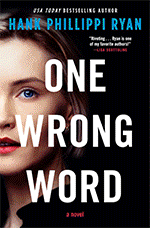
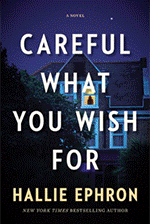
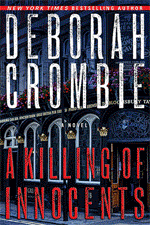


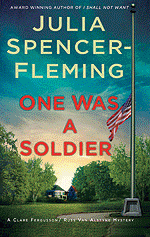
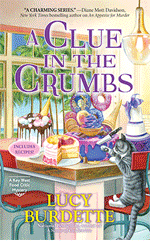
Dierdre's story really comes alive with those memories woven in . . . . I'd never really thought about it, but it's so interesting to consider how much you remember about something in your past [I tend to remember places Jean and I used to go, things we did when we were growing up] . . . .
ReplyDeleteChildhood memories of places and people... can be so vivid. And unique to you. Which is what makes them great fodder for the writer.
DeleteHALLIE: Thanks for your explanation about the differences in writing screenplays vs a novel. Now I have even more respect for the authors who write screen adaptations of their own books.
ReplyDeleteDeirdre's drive along that part of Beverly Hills is very vivid with the setting and descriptions of the characters. As an aside, I recently saw Mariska Hargitay being interviewed about a new bio about her mother Jayne Mansfield.
As for mental journeys, yes I can picture the route I took for years in my suburban Willowdale (north Toronto) neighbourhood. It was a 30+ minute walk from our apartment building to my primary school and junior high school. They were located in opposite directions.
P.S. I stayed in an Airbnb close to my junior high school for 3 days in 2021 when I was in town to clear out my late dad's retirement apt. I had not been back there since 1981 and was so amazed that the area seemed frozen in time! This was especially jarring to me since most of the commercial buildings & homes abutting the two main streets (Yonge Street and Steeles Avenue) had drastically changed.
Frozen in time! Wow. Which makes the changed places even more jarring. I'll bet the stores in downtown were all different. And why do we still have so many banks?? (And hair salons???)
DeleteYes, my former mid-town Toronto neighbourhood & parts of downtown Toronto have greatly changed since I left in 2013. Most stores are different & there are dozens of new highrise condos.
DeleteI really liked that book, Hallie. You brought the setting - so close to but so far from where I grew up - to life.
ReplyDeleteI have vivid memories in all senses of my walk to elementary school (I just looked up the distance - .8 of a mile), and of our family of six leaving before dawn (to beat the heat) to drive to Sequoia National Park for our two week camping vacations. I should write those one of these days.
Sounds like a wonderful "place" to weave into a novel. And you're reminding me of my daily walk to elementary school. And getting bonked in the head by falling acorns in the fall from the oaks (not palm trees) that lined the streets... inch worms hung in threads from those trees in their season, too, and got in your hair. Ick. (can't make this stuff up)
DeleteExcellent example, Hallie. Internal dialogue just has to be inferred in film, and is open to far more interpretation than when it's spelled out, even obliquely, in print.
ReplyDeleteSpending time this past week with my oldest and her husband, there has been a quite a lot of reminiscing going on. They live in Northern Michigan, a place where Jeff has spent every summer of his life, and owned a second home for 20 years. Now they live here fulltime, and I have also come here to visit many times in the last 30 years. His parents both now rest in a cemetery overlooking Torch Lake, and my son-in-law is a township trustee. My husband also grew up spending parts of childhood summers in the UP with family friends.
So between us, we have been recounting adventures, sharing lore, and remarking on local changes. Memory Lane, it is.
I love Memory Lane, especially strolling down it with my kids who are now old enough to appreciate it. (And the Upper Peninsula has sparked SO MANY writers...)
DeleteIt really has. I think the first I was ever aware of was Lillian Jackson Braun, the author of the Cat Who series.
DeleteThank you for the example! I am very fond of this kind of writing--it takes me right there.
ReplyDeleteI've been thinking about places from my past a lot lately, and how flashes of memories come back as brief scenes, but not a coherent narrative. I remember very well the walk through Pieri's parking lot to the drug store where we bought licorice and tootsie pops. Long replaced by new, modern businesses, but still vivid in my head. I remember the birch trees that lined Lafayette Court where I learned to ride a bike, long gone now. Over the weekend I was in my old college neighborhood and the memories came flooding back--the various places I lived, my routes to school and back, the places we went for dessert, the hours spent at Kevin's house when his parents were gone.
Gillian, your comment reminds me how memories are imbued with visuals AND sometimes even more vividly smells and tastes. When I think about the house I grew up in, and what it was like to open the front door, and it was as if the house exhaled at me. If I smelled cigarettes (Kents) and heard the tap-tapping of a typewriter keyboard, that meant my mother was downstairs in the office writing.
DeleteI remember the joyous rush of running through the bayberry patch and down a sandy lane to the Cape Cod beach. I remember the thirty minute walk hauling a stack of textbooks, to and from the junior high in the Jersey suburbs. I made up stories about the families living in the turn of the century Victorians and twenties colonials I passed. My favorite was the gloomy Victorian where Charles Addams had grown up. I imagined him watching me from an attic window.
ReplyDeleteOh, Margaret - this is magical. I've put houses that intrigued me into my books as well. The details, the details, the details you can't make up.
DeleteI enjoyed this excerpt, Hallie. I, too, write a lot about what goes on in my characters' heads; a realistic screenplay seems much more difficult to create than a novel. When I'm with my sister, we spend a lot of happy time exchanging memories and fleshing out the details of our childhoods for one another. I can't remember every step of the routes we walked to friends' houses, for example, but I can picture certain sections of our walks very clearly, like tiny video clips.
ReplyDeleteI think we all have unique memor capabilities. When I can't sleep I "go" to my elementary school (in my head) and walk the corridors, go in and out of the bathrooms, up to the library on the top floor, into the principal's office where I sat at the school secretary's desk at noon so she could get lunch. I can remember how to work the old-fashioned switchboard. Sigh.
DeleteThis. This is why Hallie might hear suggestions to write her memoir. As far as turning the lovely passage into film, directors who started in silent movies could and did make the transition to spoken dialogue. Back then the audience was literate too.
ReplyDeleteHow could this translate to film? A long tracking shot filmed with a drone, cutting to the hands shifting as the car travels, fast cutting to the actor (Dierdre has to be in top form to show emotional content, concern, irritation, reverie..and of course the sound track music to set the mood.. All could be done / but uber costly. A quiet opening to a bang up thriller indeed.
I loved that book, parts of it are still in the memory banks. Thank you.
Thank you, Coralee! Sounds like you have the makings of a MOVIE DIRECTOR in you! That's all the stuff that the director in cahoots with the cameraperson and the person in charge of editing the video. I'm sure it's why my sister Nora wanted to direct the movies she'd written - so much more control.
DeleteWhat a captivating excerpt! Thank you for that, Hallie!
ReplyDeleteThe memory that came to mind when I read your question was from my senior year of high school. Upperclassmen were allowed to schedule early release, but leaving if you had a later class was strictly forbidden. But my best friend and I, star students well-known by the staff, had 4th year French last period and a study hall the period before. So we decided at the beginning of the year that we were going to leave for that period. And we did. Virtually every day. We correctly guessed that if we walked out boldly, no one would challenge us.
So my memory is of the walk out the door and across the lawn to the student parking area, making eye contact and exchanging nods with the teachers who were monitoring. Getting into one of our cars and giggling at our small act of rebellion. We would stop at the Lawson's convenience store just outside the school grounds to buy a big bag of M&M's, then drive on to my home, just over a mile away. (It blows my mind to think of all the M&M's we ate, and still maintained girlish shapes!)
If I had time, I know I could flesh that out to a full sensory experience, because I still remember it vividly.
But but but.... shocking!!! How did you do on your French exams?? Your "Lawsons" reminds me of the drugstore on Beverly Drive and Santa Monica with all the comic books and candy my parents never let me get. (Do you think we'll survive if the powers that be ban the red coloring in M&Ms??)
DeleteHALLIE: Your mention of all the movie stars reminded me of a family story. Sammy Davis junior's first wife Maj was living in the same apartment building as my grandparents. My Mom remembers teaching her the English words like the English word for Milk. I think Maj was from Finland?
ReplyDeleteThe title from your new novel reminds me of a nursery rhyme.
Diana - So interesting! I wonder if that was Sammy Davis' Junior's second wife, May Britt, who was Swedish. Your mother sounds lovely. Is the title a nursery rhyme? We always used to add: Don't let the bedbugs bite. And fortunately we had no idea what a bedbug was.
DeleteMy dad would add the bedbugs part and ended with “and have sweet dreams”. I had no idea bedbugs were a real thing until they started being a problem in what, the last decade or so. — Pat S
DeleteThank you for your kind words. Yes, I meant May Britt and thank you for reminding me. Yes, May was from Sweden .
DeleteI remember reading this when it was first released. It's a wonderful book, Hallie.
ReplyDeleteMy memories are of St. Thomas and Sint Maarten. I traveled frequently to both from the mid-1970s through the late 1980s. It was magical. I haven't been back since 1989, but I do watch House Hunters. I would be lost these days. Sigh.
You might be surprised by how much stays the same in the midst of so much change... I go back to Beverly Hills and in the center of town I have NO touchstones, places I remember. But the Big old Hilton Hotel is still there, and the fountain with rainbow lights, and of course the HOLLYWOOD sign. Just enough to keep me anchroed.
DeleteI was just thinking about internal memories/thoughts versus dialogue, Hallie. As you know, I've been watching MURDERBOT (loved it) based on the novella ALL SYSTEMS RED by Martha Wells. In her novels and novellas, Wells keeps a tight 1st person POV (like we were discussing yesterday) on SecUnit, so we experience the events and the environment from its own decidedly caustic viewpoint, which is, frankly, what makes these books so unique and delightful.
ReplyDeleteIn the TV series, they straightforwardly opted for voice overs, starting at the very beginning and continuing consistently through the action and in between portions of the dialogue. It took about a minute to get used to, and then I just went with it. So it is possible in film, but I think making it a third element equal with the dialogue and the action/plot is what makes it work.
I'll have to find those shows. Voice over works in A Christmas Story. And what would THE SIMPSONS be without Bart's voice over??
DeleteJulia, I thank/blame you for recommending Murderbot!!! We binged the series (episodes are short and you can't watch just one) and LOVED it. Then I started the books (this is the blame part) and I swear they are like crack. And what a terrific example of first person limited viewpoint. They are just genius.
DeletePS I'm always fascinated by book to film translations, which they did really well. And you can't imagine anyone other than Alexander Skarsgard playing Sec Unit.
DeleteWow. I've gone on a self drive tour of famous Hollywood stars homes. To image it from your point of view sitting inside watching bus loads of people driving by is an interesting thought
ReplyDeleteIt was so ridiculous!
DeleteI've been walking/dreaming about settings from my childhood--coming to the end of my WIP--set where my roots are deepest--I can walk through rooms and travel roads that are imprinted on me, see faces, smell the smells of early morning, of old rooms, feel the early rising sun on my face, it's all there still. Closer to the present--walk through every room of a beloved friend's home. Yes, Hallie, waiting patiently for your memoirs :-)
ReplyDeleteGeez, here we go again. Anon Flora, above.
DeleteAnonymous: That is beautifully written!
DeleteI love your settings, Hallie. You draw them so clearly.
ReplyDeleteMost of the places from my childhood are still around. Except for the old Memorial Auditorium, where I saw many a hockey game with my dad. I still remember the smoky smell of the corridors (you could smoke inside), overlaid with the scent of hotdogs and popcorn. I remember the dizzying sensation of walking down the stairs to our seats, which were at the topmost section, but the third row, near the bottom of steep concrete stairs with a cast-iron railing in the middle. The air not quite cold, but not quite warm, either. I could see the gleam of the fresh ice get scuffed as the period progressed. And just this weird smell of... people and food in the stands.
Smell of... people and food in the stands. The way you describe this is SO VIVID, Liz!
DeleteForty years ago, when we were grad students, Linda Edelstein and I promised we'd write a mystery together one day because is would we way more fun than our dissertations were. Our challenge was setting it in a place we both knew together well since we lived cross-country from each other since our 30s and were in our 70s before our lives got sufficiently uncomplicated that we could write our novel....The pandemic and Zoom created an opportune starting point, so we chose Chicago where we'd met and our shared "minds' eye" was a joy, a bonding experience, and a great setting for the adventures of two old friends who unexpectedly find themselves now sleuthing..Not The Trip We Planned (Koehler, 2025). As others have noted revisiting scenes from your past evokes all the senses of time and place.
ReplyDeleteCarol, what a great story!! Thanks for sharing...
DeleteShared writing actually prompted some interesting conversations and associations about the power of our senses in memories. When we would identify scenes where we wanted our characters to be, in places we both knew and could visualize, we would find our memories evoked different smells or sounds or tastes to detail the settings.
DeleteThis comment has been removed by the author.
ReplyDeleteI remember so many childhood scenes from 1950s and 1960s Houston. As soon as I left my neighborhood I was oblivious. I wouldn't know where to look for the defunct Tennis Club where I learned to swim, or the long gone cafeterias where we used to eat, usually for free since Dad moonlighted doing their books.
ReplyDeleteIt's my favorite thing about Google Maps is you can "drive" down streets and look for forgotten places. Now you have me wondering if the "Tennis Club" we went to when I was a kid still exists. The chef in the little kitchen made THE MOST FABULOUS Chinese fried rice. And the tennis pro was Pancho Segura
DeleteI love this book so much..and it's such a gorgeous journey into your past. I still think of our local swimming pool when I smell Bain de Soleil! And so funny how things change--I landed at the Indianapolis airport a few years ago--my home town so I htad been there many many times--and was so completely and totally baffled when I arrived that I thought--did I get on the wrong plane? Turned out, they had re-located and replaced the entire airport, and the airport of my childhood was no more. SO disconcerting!
ReplyDeleteThat happens to me at LAX. Transformed. (And usually gridlocked going in and out :-( ) Remember the days when you could MEET the incoming passengers by going to their gate?
DeleteI love this book, Hallie, and this passage is so evocative. I don't live that far from where I grew up, so it's too bad I don't get to use it in settings. In May I went to the big art festival held literally across the street from my high school, passing my first elementary school on the way. Then afterwards I drove by my middle school, then down the street where my high school boyfriend lived. Here memory failed me. I knew which side of the street but I couldn't pick out the exact house. But I remember the layout of the house and the smell of cigarettes and incense, the one that came as little black cones...
ReplyDeleteOMG that's the start of a new story... (I set a book in a boyfriend's house ... in my book I burned down the garage and swam in the pool.)
DeleteI still live where I grew up so it's easy to find my former homes. My grandparents sold their property and the house, barn and warehouse were torn down in the early 1980s. I drive past the old property all the time but when I google the actual address, which is not in use, and arrive at what should be the front of the house, I keep questioning the location. It seems too close to the cross street. Maybe the whole intersection has been increased to accommodate the old state highway. Too many building changes, old houses across the highway gone, and trees cut down. I know where I am, no problem and I know it's not my old home (safe place) anymore, but I still try to find a piece of it. Maybe I'll take walk on the creek path the city create when the new housing went in. Maybe not, there were snakes down there back then. (brr)
ReplyDeleteHallie, I love this book so much. It's like being invited to a party that I'd never being invited to otherwise. I don't have setting so much as characters from my life--terrible parents and grief seem to be recuring themes. I think I'm still working my "stuff" out. LOL.
ReplyDeleteHallie thank you for this - this post is gold
ReplyDeleteIt's so evocative but also freeing to think about tapping into those places that for some of us who are only children who've lost our parents are the only living people to own those places
Your insight ranks up there with something Rhys Bowen said at last year's MWC - she said she fully taps her experiences to recycle into experiences for her characters - she implied or at least I inferred that sometimes when it feels appropriate she uses them as whole cloth
I've been long stymied with the fear of the Jesus novel - what my writing professors & other critics have said is a first novel's thinly disguised recounting of the author themselves as protagonist
I do see that of course the material needs to be reimagined to not just be vanity but rather something of interest to strangers but that's easy enough to judge just in the telling of one's unrecycled stories to friends - it's easy to see it in their eyes when something is interesting on its merits versus when friends are solely engaged out of friendship & love
Thank you for sharing this 💗